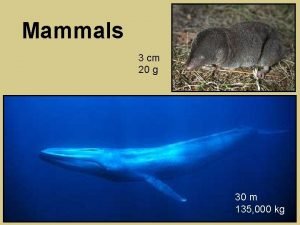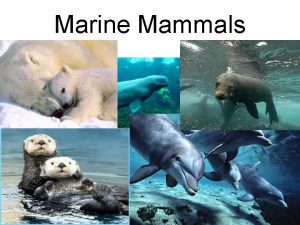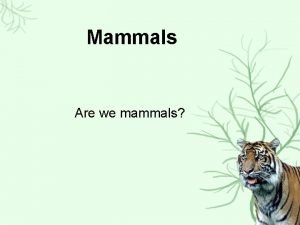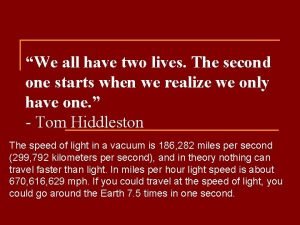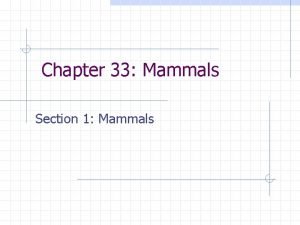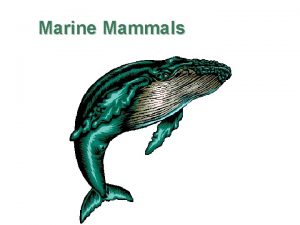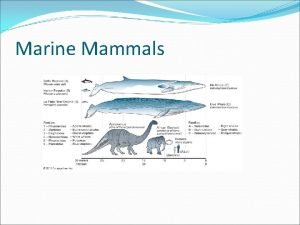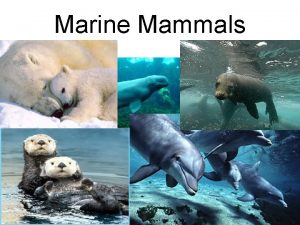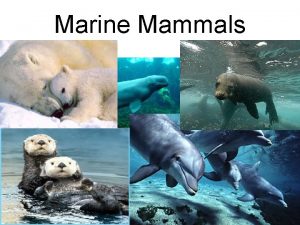Mammals Class mammilia Mammals All mammals have two










- Slides: 10

Mammals Class mammilia

Mammals • All mammals have two notable features: hair and mammary glands. • In females, mammary glands produce milk to nourish the young. • In addition to this they also • breathe air. • have four-chambered hearts. • are endotherms that generate their body heat internally.

Feeding The joint between the skull and lower jaw allowed mammals to evolve larger, more powerful jaw muscles and different ways of chewing. • Carnivore-sharp teeth for ripping flesh • Herbivore- flat teeth for grinding food • Omnivore- has both sharp and flat teeth

Circulation • Mammals are endotherms – Their metabolic activates generate heat – Retained by hair and layers of insulating body fat • How they control body temp – Sweating, panting, shivering, running adjusting circulation • Have a closed circulatory system with a – 4 chambered heart – Most efficient of all

Heart

Nervous System • Have the most advanced nervous system of all animals – Have a well developed brain and several different sensory organs

Movement • The limbs and digits of many mammals are adapted to their particular way of life. Forming what is referred to as Homologous structures

Groups of mammals • Monotremes • Share characteristics with reptiles • The digestive, reproductive, and urinary systems all open into a cloaca • Females lay soft-shelled eggs that incubate outside the body • Only three species of monotremes exist today – Duckbill platypus, spiny anteaters, and echidnas

Groups of mammals • Marsupials • bear live young, but at a very early stage of development • Young marsupials complete their development in an external pouch

Groups of mammals • Placental mammals are named for an internal structure called the placenta, which forms when the embryo's tissues join with tissues from within the mother's body. • The placenta allows nutrients, gases, wastes, etc. to be exchanged between the mother and the young mammal
 Human vs animal hair
Human vs animal hair All mammals have hair. its main purpose is to
All mammals have hair. its main purpose is to Tritheledont
Tritheledont Mammal and non mammal
Mammal and non mammal Name all the rays
Name all the rays What us a mammal
What us a mammal Which solid has 6 faces 12 edges and 8 vertices
Which solid has 6 faces 12 edges and 8 vertices What do mammals have
What do mammals have We all have two lives
We all have two lives When two curves coincide the two objects have the same
When two curves coincide the two objects have the same Help ever hurt never meaning in tamil
Help ever hurt never meaning in tamil


